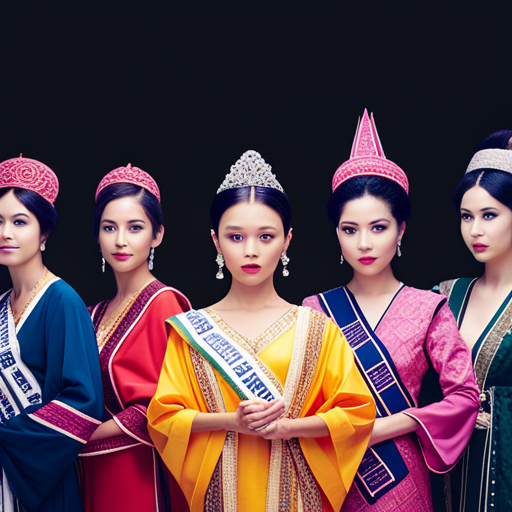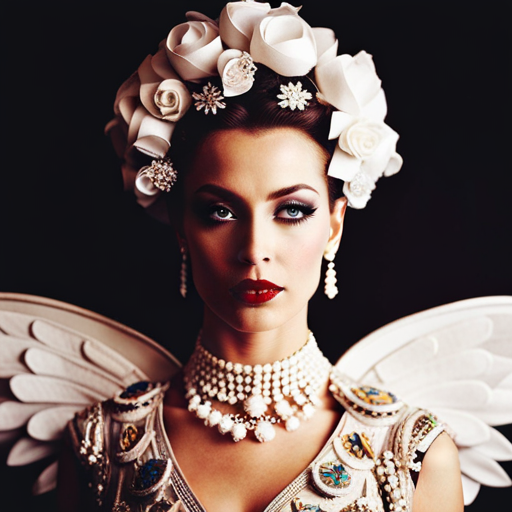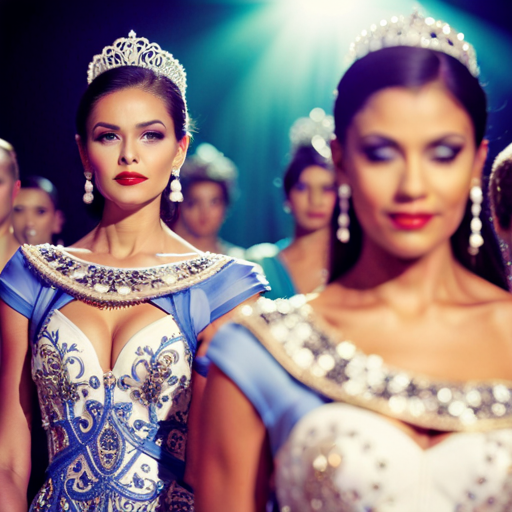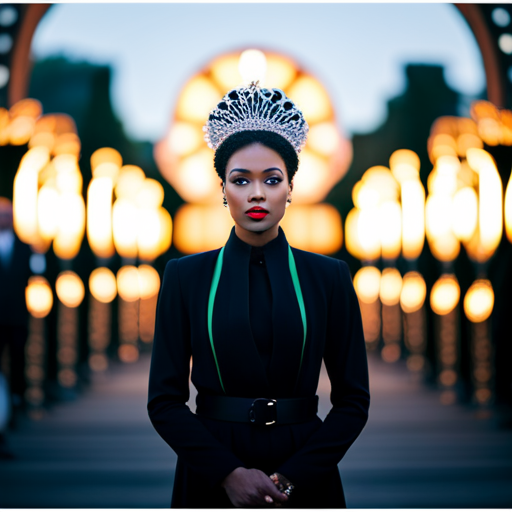The Influence of Cultural Attire in Pageants

Step into the dazzling world of pageantry, where the influence of cultural attire transcends mere fashion and becomes a powerful statement of heritage, tradition, and identity.
The fusion of history, symbolism, and personal significance within these vibrant ensembles has evolved into a pivotal aspect of pageant competitions.
This article delves into the profound impact of cultural attire on contestants’ confidence, audience perception, and the representation of diversity within the pageant sphere.
Historical Significance of Cultural Attire
The historical significance of cultural attire in pageants can be traced back to its role in preserving and promoting traditional customs and values within a community. Cultural attire serves as a visual representation of a community’s history, beliefs, and social structure. It is a reflection of the collective identity of a group of people, encapsulating their heritage and roots.
By showcasing cultural attire in pageants, participants not only pay homage to their ancestors but also educate others about the significance of their traditions.
Cultural attire in pageants also plays a crucial role in cultural preservation. As societies evolve and modernize, there is a risk of traditional customs and values being overshadowed or forgotten. By incorporating cultural attire into pageantry, these customs are given a platform to thrive and endure.
This helps to instill a sense of pride and appreciation for one’s heritage, ensuring that the rich tapestry of cultural diversity is celebrated and safeguarded for future generations. In this way, pageants become not only a showcase of beauty and talent but also a vehicle for the preservation of cultural identity.
Evolution of Cultural Attire in Pageants
How has the incorporation of cultural attire in pageants evolved over time to reflect changing societal norms and values?
The evolution of cultural attire in pageants has been influenced by various factors, including fashion trends and the increasing emphasis on representation and inclusivity.
-
Fashion Trends
The evolution of cultural attire in pageants has been closely linked to changes in fashion trends. As fashion evolves, so does the way cultural attire is incorporated into pageant competitions. Traditional garments are often modernized to align with contemporary fashion, reflecting the fusion of cultural heritage with current styles. This evolution not only keeps cultural attire relevant but also ensures its continued appeal to a diverse audience. -
Representation and Inclusivity
Over time, there has been a notable shift towards greater representation and inclusivity in pageants. This has led to the broader incorporation of cultural attire from various ethnicities and regions. Pageants now strive to showcase a more diverse range of cultural attire, representing the rich tapestry of global heritage. This evolution reflects a growing recognition of the importance of celebrating and honoring different cultural traditions within the pageant community.
Symbolism and Meaning Behind Cultural Attire
Cultural attire in pageants is more than just clothing; it serves as a representation of the rich traditions and heritage of a community. Each piece of attire carries deep symbolism and meaning, reflecting the values, history, and identity of the culture it represents.
Understanding the significance behind these garments provides insight into the diverse cultural tapestry that pageants aim to showcase.
Cultural Attire Representation
Symbolism and meaning behind cultural attire play a significant role in conveying heritage and tradition during pageant events. The representation of cultural identity through attire allows contestants to showcase their roots, customs, and beliefs, providing a platform for global representation.
This representation goes beyond mere clothing, as it encapsulates the essence of a community’s history and values, allowing for a deeper understanding of diverse cultures. The intricate details and designs of the attire often hold specific meanings, such as symbols of prosperity, love, or spirituality, offering insight into the cultural significance of each garment.
Moreover, the fusion of traditional and contemporary elements in cultural attire reflects the ongoing evolution of heritage, highlighting the adaptability and resilience of different cultural practices in a globalized world.
Tradition and Heritage Significance
The representation of tradition and heritage significance through cultural attire in pageants offers a profound insight into contestants’ roots, customs, and beliefs, serving as a platform for global representation.
Cultural attire symbolizes the heritage preservation of a community, showcasing its unique identity and values. By incorporating traditional elements into their attire, contestants not only honor their ancestors but also contribute to the continuity of cultural practices.
Moreover, the influence of cultural attire in pageants extends beyond tradition; it also reflects fashion trends specific to different regions, thereby showcasing the dynamic nature of cultural expression.
Understanding the symbolism and meaning behind these attires provides a deeper appreciation for the diverse and rich tapestry of global cultures. This appreciation, in turn, significantly impacts the contestant’s confidence and identity, as they proudly represent their heritage on a global stage.
Impact on Contestant’s Confidence and Identity
When considering the impact of cultural attire in pageants, it is important to acknowledge how it influences contestants’ confidence and identity. The wearing of cultural attire in pageants can have a significant impact on the confidence and identity of the contestants. This impact can be observed in several ways:
-
Confidence Boost: Wearing cultural attire allows contestants to showcase their heritage and traditions, providing them with a sense of pride and confidence in representing their cultural background on a public platform.
-
Self-Expression: Cultural attire serves as a form of self-expression, allowing contestants to express their individuality and connection to their cultural roots, which can result in a boost in their self-assurance and poise on stage.
-
Cultural Pride: The opportunity to wear cultural attire in a pageant setting can instill a deep sense of cultural pride in contestants, empowering them to embrace and celebrate their cultural identity with confidence and enthusiasm.
-
Personal Empowerment: The act of donning cultural attire can lead to a heightened sense of personal empowerment as contestants embody and embody the values, traditions, and history of their cultural heritage, fostering a strong sense of self-assuredness and empowerment.
The influence of cultural attire in pageants goes beyond aesthetics, playing a pivotal role in shaping the confidence and identity of the contestants, ultimately contributing to a more diverse and inclusive pageant experience.
Cultural Attire as a Representation of Diversity
How does cultural attire in pageants serve as a representation of diversity? Cultural attire in pageants plays a crucial role in representing the rich tapestry of global diversity. It serves as a visual manifestation of inclusivity, showcasing the plethora of traditions, customs, and heritage that contestants bring to the stage. The evolution of fashion within cultural attire reflects society’s changing attitudes towards diversity and the recognition of the significance of different cultures. This representation not only celebrates the uniqueness of each culture but also fosters a sense of unity and understanding among diverse communities. Through the donning of traditional garments and accessories, contestants proudly exhibit the cultural significance and historical legacy of their heritage, promoting a deeper appreciation for the world’s multifaceted identities.
| Cultural Attire | Representation of Diversity |
|---|---|
| Showcases a variety of traditional garments | Reflects the rich tapestry of global diversity |
| Evolution of fashion within cultural attire | Illustrates changing attitudes towards inclusivity |
| Celebrates the uniqueness of each culture | Fosters unity and understanding among diverse communities |
| Exhibits cultural significance and historical legacy | Promotes appreciation for multifaceted identities |
| Visual manifestation of inclusivity | Represents the significance of different cultures |
Influence on Judging Criteria and Audience Perception
The influence of cultural attire in pageants extends beyond visual aesthetics, impacting the judging criteria and audience perception.
The choice of cultural attire can influence the standards by which contestants are evaluated, as well as the audience’s interpretation of the representation of diversity.
These factors play a significant role in shaping the overall impact and reception of cultural attire in pageants.
Impact on Judging Standards
Examining the influence of cultural attire in pageants involves assessing its impact on judging standards, including the influence on judging criteria and audience perception. This impact is significant as it reflects the evolving nature of pageants towards embracing cultural diversity and inclusivity.
The influence of cultural attire on judging standards is evident in the following ways:
-
Expanding Judging Criteria: Cultural attire has prompted pageant organizers to expand their judging criteria to include elements such as knowledge and appreciation of diverse cultural traditions. This shift encourages contestants to embody cultural authenticity and awareness, enriching the overall pageant experience.
-
Shaping Audience Perception: The inclusion of cultural attire in pageants alters audience perception by promoting a broader understanding and celebration of diverse cultural expressions. This can lead to increased engagement and support for pageants that embrace cultural diversity in their judging standards.
Audience’s Cultural Interpretation
Building on the previous subtopic, the influence of cultural attire on pageants extends to the audience’s cultural interpretation, impacting judging criteria and audience perception.
The audience’s cultural interpretation of the contestants’ attire plays a pivotal role in shaping their perception of the pageant. Cultural expression through attire can evoke a range of emotions, attitudes, and beliefs in the audience, thus influencing their overall perception of the contestants.
The audience’s perception is crucial as it can indirectly affect the judging criteria, as judges may be influenced by the audience’s reactions to the cultural attire. Therefore, the audience’s cultural interpretation of the contestants’ attire becomes an integral part of the pageant’s dynamics, contributing to the overall experience and outcome.
Understanding the audience’s cultural interpretation sheds light on the significance of cultural attire in pageants and its widespread impact.
This understanding sets the stage for exploring the challenges and controversies surrounding cultural attire.
Challenges and Controversies Surrounding Cultural Attire
Challenges and controversies surrounding cultural attire in pageants have sparked important discussions about representation and respect. The inclusion of cultural attire in pageants has raised concerns about cultural appropriation and the potential commodification of traditional clothing. This has led to a deeper examination of the ways in which cultural pride can be celebrated without crossing into appropriation.
-
Cultural Appropriation
-
The use of cultural attire in pageants by individuals who do not belong to that culture has been criticized for perpetuating stereotypes and disrespecting the significance of the attire within its cultural context.
-
Pageant organizers and participants are increasingly being called upon to consider the implications of wearing cultural attire and to ensure that it is done in a respectful and authentic manner.
-
Cultural Pride
-
On the other hand, many argue that the inclusion of cultural attire in pageants provides an opportunity to showcase and celebrate the diversity of different cultures, promoting cultural pride and understanding.
-
Advocates emphasize the importance of educating audiences about the cultural significance of the attire and its role in fostering cross-cultural appreciation.
Frequently Asked Questions
How Do Contestants Prepare Their Cultural Attire for Pageants?
Contestants prepare their cultural attire for pageants by meticulously researching and selecting traditional garments that represent their heritage. This process involves attention to detail, cultural authenticity, and often consultation with elders or experts to ensure respectful representation.
Are There Any Specific Rules or Guidelines for Wearing Cultural Attire in Pageants?
Cultural sensitivity and fashion trends influence the rules and guidelines for wearing cultural attire in pageants. These guidelines ensure respectful representation of diverse cultures while also aligning with contemporary fashion trends, promoting inclusivity and understanding.
Do Contestants Receive Any Training or Guidance on How to Present Their Cultural Attire on Stage?
Contestants are often provided training and guidance on presenting their cultural attire on stage. This includes coaching on cultural sensitivity, understanding the historical significance of the attire, and enhancing stage presence to effectively showcase their heritage.
What Are Some Examples of How Cultural Attire Has Influenced the Outcome of Pageants in the Past?
Cultural representation in pageants has significantly impacted judging criteria. Past examples include contestants who effectively showcased their cultural attire, influencing judges’ perception and ultimately contributing to their success in the competition.
How Do Pageants Handle Cultural Appropriation When It Comes to Contestants Wearing Cultural Attire?
In pageants, cultural sensitivity is paramount when addressing contestants wearing cultural attire. Pageants handle cultural appropriation through strict guidelines, education, and respectful dialogue. Emphasizing inclusivity, they strive to honor and celebrate diversity with grace and understanding.
Conclusion
In conclusion, the influence of cultural attire in pageants is a reflection of the diverse and rich history of different cultures.
The evolution and significance of these attires have impacted the confidence and identity of contestants, as well as influenced judging criteria and audience perception.
However, challenges and controversies have also surfaced. Nonetheless, the cultural attire in pageants serves as a powerful representation of diversity and tradition, adding depth and meaning to the competition.





